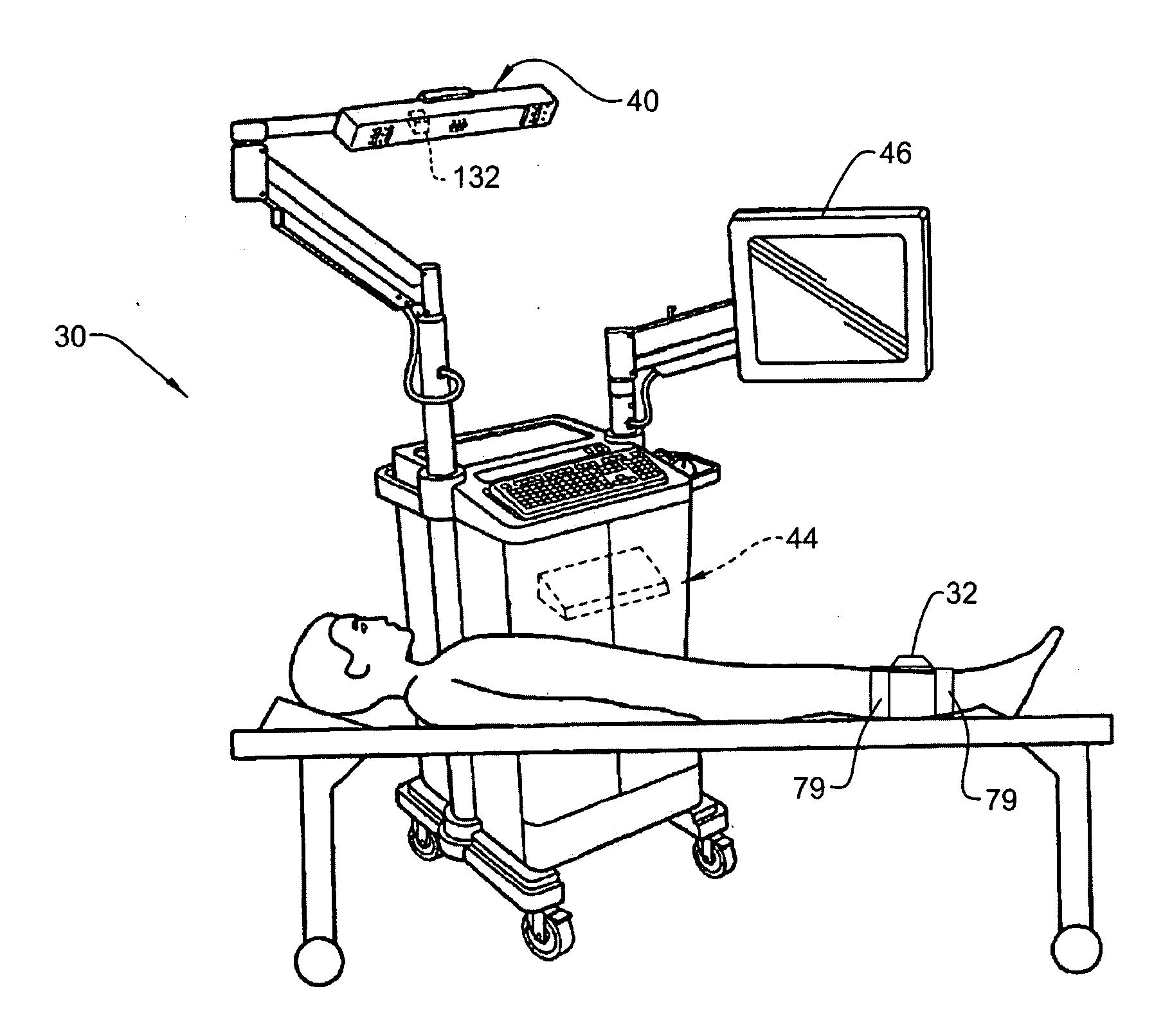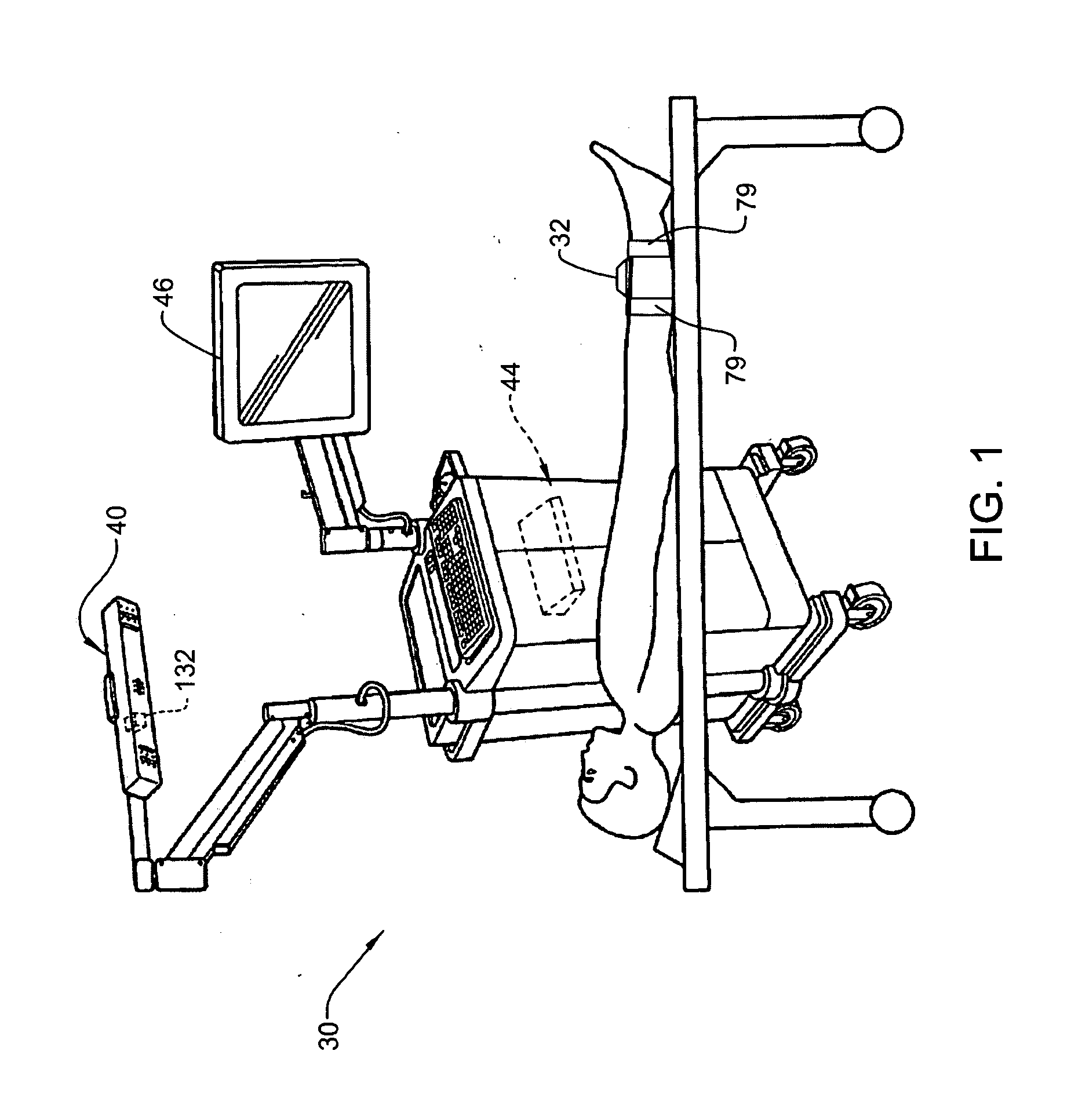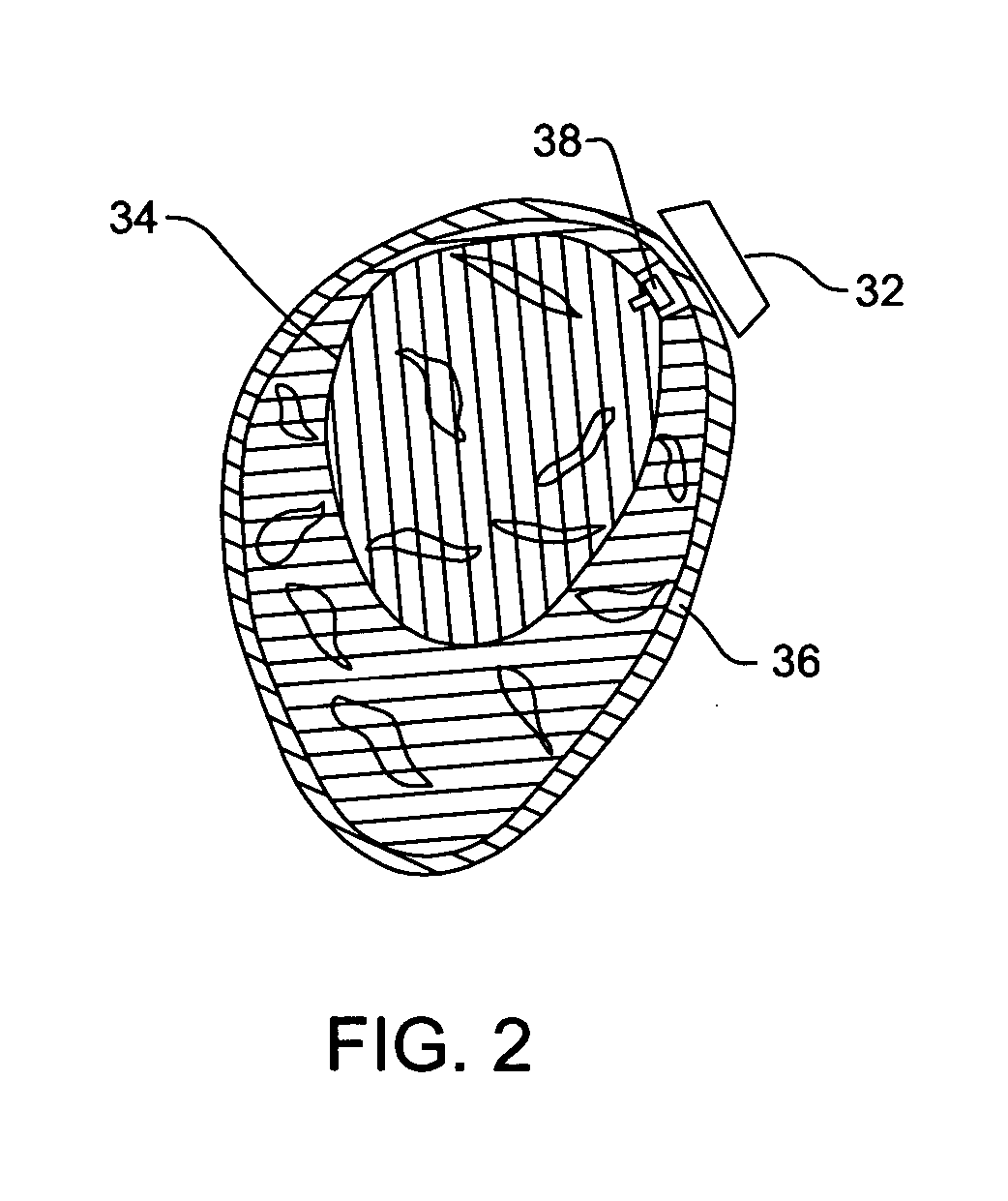Hybrid navigation system for tracking the position of body tissue
a navigation system and body technology, applied in the field of surgical navigation system, can solve the problems of system not producing signals that accurately represent the position of the body tissue, adds to the trauma to which the patient is exposed, and limitations associated with its use, and achieves the effects of low strength, low strength energy, and small siz
- Summary
- Abstract
- Description
- Claims
- Application Information
AI Technical Summary
Benefits of technology
Problems solved by technology
Method used
Image
Examples
Embodiment Construction
I. Basic System
[0044]FIGS. 1 and 2 provide an overall view of the components of the surgical navigation system 30 of this invention. System 30 includes a tracker 32 that is loosely fitted over the tissue, here the tibia 34, the position of which is to be tracked. Attached to the tibia 34, below the skin 36, is a bone marker 38. Tracker 32 and bone marker 38 contain complementary components of a first navigation system that generate data indicating the position of the bone marker relative to the tracker. Generally, this process occurs by one of the tracker head 32 or bone marker 38 emitting energy; components internal to the other of the bone marker 38 or tracker 32 sense the strength of the emitted energy.
[0045] A localizer 40 often spaced 1 m or more from tracker head 32 is also part of the system 30. Internal to the tracker head 32 or localizer 40 are components the actively or passively broadcast energy to the other of the localizer or the tracker. Sensors internal to the locali...
PUM
 Login to View More
Login to View More Abstract
Description
Claims
Application Information
 Login to View More
Login to View More - R&D
- Intellectual Property
- Life Sciences
- Materials
- Tech Scout
- Unparalleled Data Quality
- Higher Quality Content
- 60% Fewer Hallucinations
Browse by: Latest US Patents, China's latest patents, Technical Efficacy Thesaurus, Application Domain, Technology Topic, Popular Technical Reports.
© 2025 PatSnap. All rights reserved.Legal|Privacy policy|Modern Slavery Act Transparency Statement|Sitemap|About US| Contact US: help@patsnap.com



